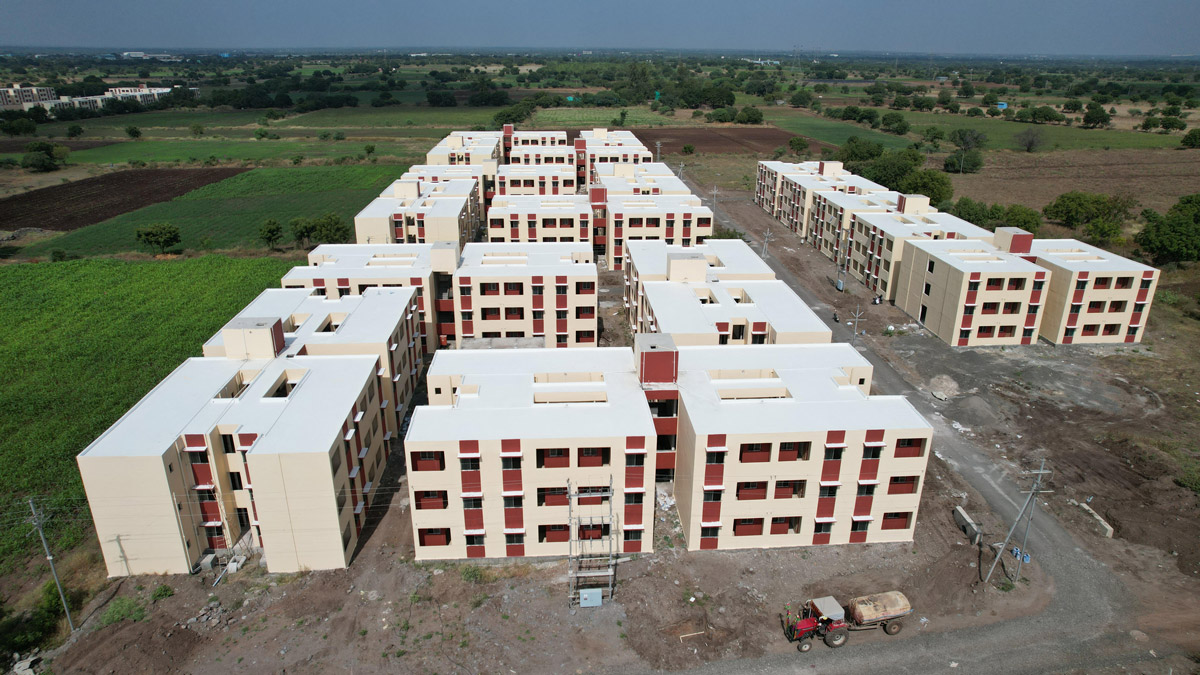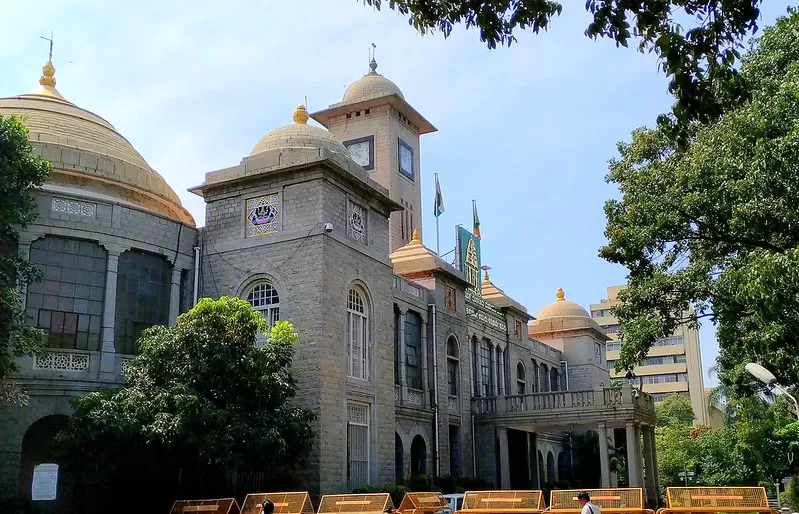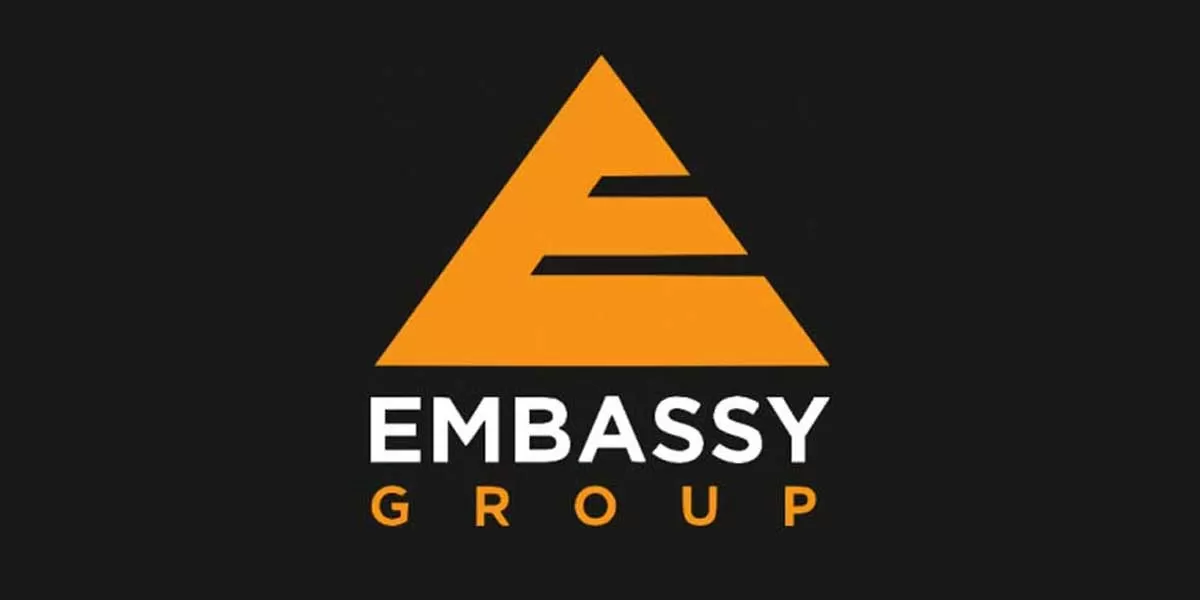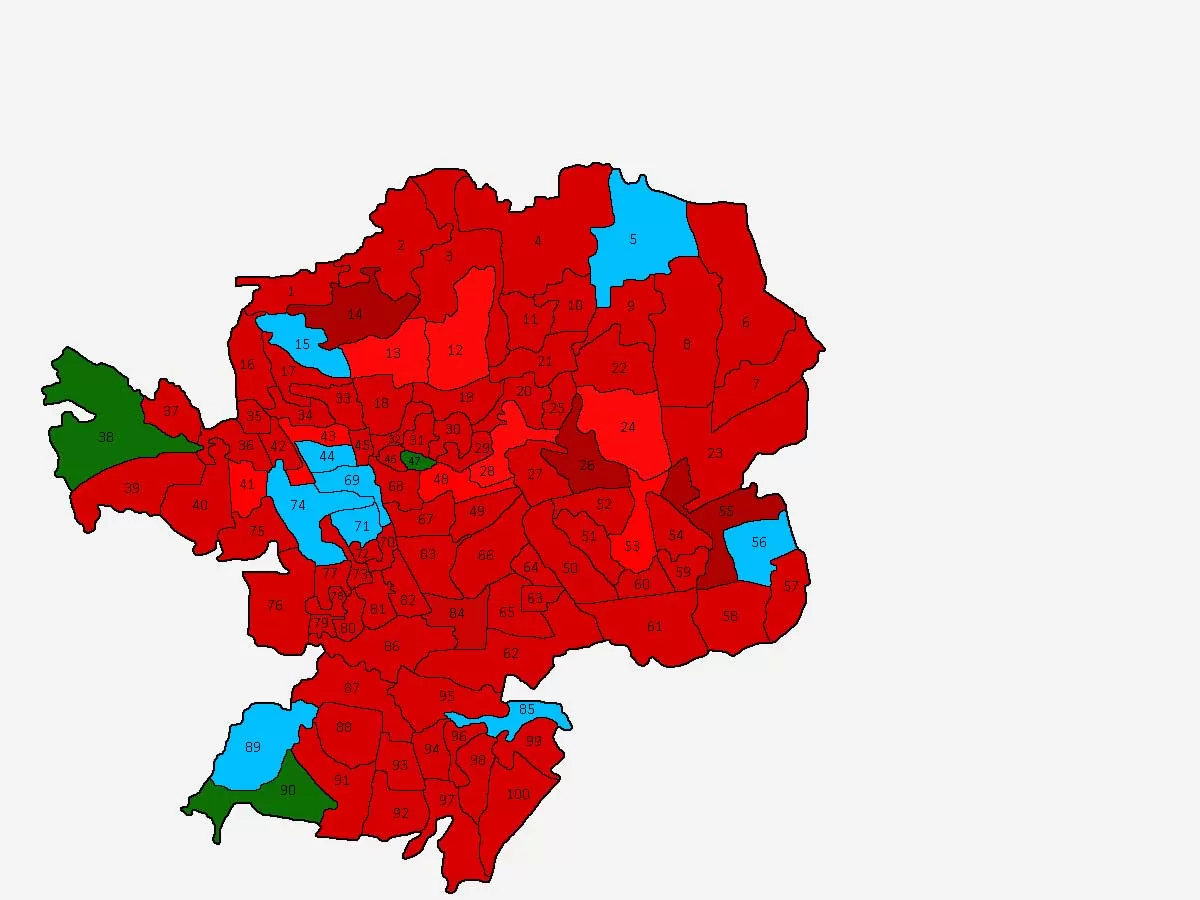It has been nearly eight years since the Government launched the Pradhan Mantri Awas Yojana (PMAY), a programme to provide all-weather houses to the less privileged in urban and rural India. To maximise its impact, the programme was designed to be implemented through four verticals: beneficiary-led construction, affordable housing in partnership (AHP), in-situ slum redevelopment (ISSR) and a credit-linked subsidy scheme.While PMAY was slated to be completed by March 2022, only the credit-linked subsidy scheme, had concluded by then. Overall, the completion rate of PMAY-U (Urban) was 69.73 per cent while the completion rate of the PMAY-G (Gramin, or Rural) stood at 85 per cent. Until now, urban India has seen 11.863 million houses sanctioned, 11.343 million houses grounded, 7.827 million houses completed and Rs.1539.7 billion released as central assistance out of a total commitment of Rs.2000 billion so far. In view of the shortfall, the programme implementation (other than the credit-linked subsidy scheme) has been extended till December 2024.According to Swapnil Anil, Executive Director & Head, Advisory Services, Colliers India, the gap indicates that “the scheme has faced certain challenges despite exemplary supporting policies and government initiatives such as faster approvals and well-designed benefits to different income classes.”Key challengesScarce land in prime locations, leading to difficulties in securing suitable plots in micro-markets, prolonged regulatory processes, lower developer participation owing to low profit margins and bid participation complexities are the key challenges associated with PMAY, says Anil. “Additionally, rising construction costs, the impact of financial markets and limited use of innovative technology impacted the pace of the scheme.”Land shortage and the high cost of available land within municipal limits, especially in urban areas seeing a greater shortage of housing, is a primary challenge associated with PMAY, agrees Vivek Rathi, National Director Research, Knight Frank India. “AHP and ISSR projects need multiple clearances such as at the tendering/retendering stage, clearing the slums for redevelopment, arranging transit accommodation and so on, which consume a significant amount of time and can delay projects. Sometimes, the regional topography, climatic hazards and availability of building materials and labour delay the grounding and completion of projects or houses.”“In the Northeast, the construction rate has been slow, thereby increasing the cost of construction and the central assistance released hasn’t reached the beneficiaries in certain places,” adds Santhosh Kumar, Vice Chairman, ANAROCK Group. “In ISSR and AHP projects, housing units in completed blocks have remained unoccupied for being unsafe due to ongoing onsite construction of the remaining blocks, the absence of approach roads and other infrastructure, and/or delays in identifying and finalising beneficiaries. The latter reasons are especially of concern in Andhra Pradesh, Telangana, Karnataka and Chhattisgarh.”Here, the role of municipalities in providing the necessary infrastructure must be emphasised.“Municipalities and smart cities contribute to PMAY projects by providing essential amenities and infrastructure to PMAY households,” explains Anil. This is in addition to other duties entrusted to these entities, which he lists as: formulating and presenting project proposals for approval to state/union territory administrations, aligning PMAY projects with broader urban objectives by strategically linking them to initiatives such as the Smart Cities Mission, AMRUT and Swachh Bharat Mission, identifying and verifying the housing demand from eligible beneficiaries across diverse sectors, and monitoring their on-the-ground implementation.“Municipalities and smart cities’ engagement extends to project implementation and monitoring, land identification and acquisition, beneficiary identification through socioeconomic surveys, technology (GIS, data analytics and digital platforms) integration in smart cities, infrastructure development (roads, water supply, sewage systems), engaging in PPPs to accelerate housing development, ensuring compliance with guidelines, building codes and environmental regulations, and facilitating community participation in the planning and execution of housing projects,” adds Kumar.Coming back to implementation challenges, Kumar points out that timelines for completing projects and handover of units to beneficiaries haven’t been set by the implementing agencies. “In certain instances, land allotted under PMAY-U projects has been diverted to other projects/purposes. Despite being an important vertical, as it provides housing to landless people, too few units were sanctioned under the ISSR vertical. Against a demand of 1.435 million houses only 0.433 million were sanctioned. Such projects have been delayed by the unavailability of land, seeking statutory clearances and clearing slums.”In rural areas, Vishnu Swaminathan, Director, Indian Housing Federation, points out that while PMAY-G has been vastly successful, cost escalation in recent years, especially after COVID-19, coupled with the lack of access to formal financing has impacted completion rates.Corrective measuresTo expedite PMAY project implementation at optimum cost, Anil believes the Government should promote new and alternative technologies. “Also, an innovative approach to enhance the monitoring and assessment system would ensure the transparent and accountable execution of projects,” he says. “Collaborating with a diverse range of stakeholders with a focus on PPPs would also help address and overcome the multifaceted challenges.”Kumar proposes the use of technology and innovation in construction methods (including prefabricated materials and sustainable construction practices) to expedite project timelines, reduce costs and enhance the quality of housing units, and in project management (digital platforms for online documentation, transparent allocation processes, and real-time reporting). “Awareness campaigns are essential to inform potential beneficiaries about the scheme and its benefits,” he adds. “Also, policies related to housing and urban development must be continuously reviewed and updated, introducing flexibility and adapting to changing needs. Prioritising the development of essential infrastructure; ensuring adequate and timely funding; fostering PPPs to leverage resources, expertise and efficiency in housing projects; and facilitating labour skill development programmes and capacity building in urban local bodies to formulate and design mass-housing projects would also help. Focusing on the lifecycle cost approach to the construction of houses rather than the cost-per-sq-ft approach would ensure the quality of construction and reduce the unit maintenance expenditure.”Rathi proposes that the Government makes land available in urban centres, lowers indirect taxes like GST, and enhances the credit flow to these segments for the creation of assets.Extending interest subsidiesIndia still has a long way to go before every needy family has a ‘pukka’ home. So, Rathi points out that the successful features of PMAY should be extended; in particular, “the Government should consider continuing the interest subsidy scheme.”Noting that the credit-linked subsidy scheme was a welcome initiative to encourage home buyers in the affordable category (EWS/LIG/MIG) to secure their dream home, while also proving beneficial for developers, Jash Panchamia, Management, Suraksha Group, observes that it should have been continued, especially considering the increase in home loan rates. This hike has most impacted Tier-1 cities where high land costs keep the cost of apartments high.“Relaunching the interest subsidy scheme on housing loans would be a boon to lower and middle-income segments,” agrees Swaminathan.The Suraksha Group’s Suraksha Smart City project in Vasai East (the core of the MMR region) is directly approved under the PMAY scheme under the PPP model, implying that the buyers of its EWS units were eligible for a direct subsidy of `0.25 million. “Extending the credit-linked subsidy scheme would have helped inspire buyers in the LIG and above categories to secure their homes,” adds Panchamia.Another suggestion from Atma Ram Gupta, Chairman, ARG Group, a company that is constructing housing units for all the eligible categories in PMAY, is that home loans by nationalised banks to applicants falling in the EWS should be securitised by the Government. “We have seen heavy booking of units made under the PMAY schemes but about 50-60 per cent cancellations because the applicants cannot produce the complete documentation needed by the bank to process their loan,” he says. “So, the Government should offer some security to nationalised banks to cover genuine applications for housing units under PMAY. Securitisation would allow banks to be more liberal in processing loans to EWS applicants.”Impact on materialsThe construction of affordable housing necessitates judicious choices of materials and methods. As Sailesh R Mahimtura, Chairman & Managing Director, Mahimtura Consultants, says, “Affordable housing has increased the quantity of construction and hence encouraged the use of quicker methods, higher quality materials amenable to speedy deshuttering such as 600 grade TMT bars instead of 550 grade TMT bars, and interior finishing products that are easy to install (without any ‘wet’ finishing). TMT bars of grades higher than 600 are available but we’re lagging behind in the structural steel H-rolled sections, plated sections (greater thicknesses suitable for taller and quicker construction). Also, while higher strength TMT bars are available, construction codes to push their deployment are missing. There is still plenty of scope to introduce new steel products in India as well to increase the use of steel in residential construction. The possibility of earthquakes also mandates code revisions but this is in the hands of the Government.”A steel segment expert indicates that the demand for TMT steel bars has increased about 5 per cent as a result of the push of affordable housing. The increase is “limited” because “developers tend to optimise the use of steel in buildings”.Nor has low-cost housing made an appreciable increase to the demand for concrete or cement as yet, says Anil K Banchhor, Managing Director & CEO, RDC Concrete. “This is because unlike most housing projects that deploy Mivan formwork for the walls and slabs, the use of concrete in affordable housing units is limited to slabs and columns; the rest is blockwork. So, the per-unit consumption of cement is lower in affordable housing compared to mid-segment and premium housing units.”However, he believes that “if the affordable housing movement picks up across India, the cumulative demand for cement may improve in that segment appreciably.”Low-cost interiorsComing to the interiors, you might assume that PMAY projects would only consume the least expensive entry-level products in every interior category. However, “while there is a demand for cost-effective essential bathroom components (water closets, basins and faucets) and wall and floor tiles, the diversity of the PMAY projects is also considerable in the mid-range market,” observes Deepshikha Khaitan, Joint Managing Director, CERA. “Thus, there is a need for products that cater to different affordability levels without compromising on quality and style.”To cater to this diverse demand, CERA has introduced new product lineups that meet the prescribed affordability standards while maintaining quality standards.“While the PMAY projects have stimulated demand for our entire product range (especially faucets, shower systems, and toilets), they have particularly driven interest in our more budget-friendly options, meeting the specific requirements of this market segment,” adds Sudhanshu Pokhriyal, Chief Executive Officer, Bath & Tiles, Hindware.“Hindware is a key player in the market, and we have adapted to the evolving demands of our customers by introducing new innovations and a wide range of products tailored for the affordable housing segment.”While Khaitan attests that the sanitaryware and tile industry has experienced a notable impact on demand as the construction of affordable housing projects has gained momentum under PMAY, Subrata Basu, Vice President - Marketing, Nitco, says, “PMAY hasn’t created a high demand pull for us. The product type, tender process and ask are largely for the lowest cost and quality standards suitable for mass producers willing to play with cost and quality standards working on capacity scale.”That said, Basu adds, “Some government bodies have started shifting to better quality specifications in the BOQ [Bill of Quantities],” which bodes well for the industry. “As a company following global standards, it has always been our endeavour to improve the standard specs with newer specs driving higher value and durability in the long term,” he says.Ultimately, maximum value for the minimum spend is what affordable housing is all about.


















